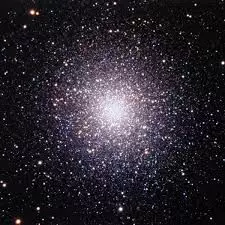See 1,00,000 Stars at Once: August 2025 Star Clusters to Light Up the Night Sky
August 2025 brings a celestial spectacle with the Great Hercules Cluster, the Hyades, and the Pleiades lighting up the night sky. Here’s how to spot over 1,00,000 stars at once.
The Great Hercules Cluster (M13), a globular cluster of nearly 100,000 stars, will shine brightly in August 2025 skies.

Skywatchers in the northern hemisphere are in for a cosmic treat as the nights of August grow darker. The night sky will be dominated by three brilliant star clusters this month, providing a unique opportunity to see thousands of stars crammed into shimmering formations. When viewed through binoculars or a telescope, these celestial wonders, which are visible to the unaided eye from dark-sky locations, display their full splendour.
Star Clusters: What Are They?
Star clusters are large families of stars that are gravitationally bound together and originate from the same interstellar cloud. They fall into two primary categories:
Open Clusters: Usually found in the spiral arms of the Milky Way, these young, loosely bound groups include the Pleiades and Hyades. They scatter as stars separate over millions of years.
Globular Clusters: Old, densely populated spheres with hundreds of thousands of stars. To the unaided eye, they frequently appear as faint, glowing patches and orbit both high above and below the Milky Way's disc.
About 1,000 open clusters and 150 globular clusters are thought to exist in the Milky Way, according to astronomers. Give your eyes 30 minutes to acclimatise to the darkness before attempting to spot them. Faint light can be captured by using averted vision, which involves looking slightly to the side of the target. The view is further enhanced by binoculars or telescopes, which show complex star patterns.
M13, the Great Hercules Cluster
The Great Hercules Cluster (Messier 13), one of August's most brilliant sights, is located in the constellation Hercules 25,000 light-years away. About 100,000 stars are crammed into a brilliant sphere in this enormous cluster.
Look for the Keystone asterism, a diamond-shaped star pattern, between the bright summer stars Vega and Arcturus to find it. This ancient cosmic gem can be seen by sweeping your binoculars between Zeta and Eta Herculis.
The Cluster of Hyades
The Hyades, which rise in the constellation Taurus before dawn, outline the bull's face in a sideways "V." It is the nearest open cluster to Earth, only 150 light-years away. Although it is 65 light-years away, its brightest star, Aldebaran, gleams like the bull's red eye.
The Seven Sisters, or Pleiades
One of the most recognisable night sky formations, the Pleiades or Seven Sisters, is located above the Hyades. Although it is home to more than 1,000 young stars, the seven brightest shine through binoculars and dominate its glistening appearance. The Pleiades, which are situated roughly 10 degrees above the Hyades, provide an amazing window into the Milky Way's star-forming past.
In August 2025, skywatching
August is going to be a stargazer's dream, whether it's the delicate beauty of the Hyades and Pleiades or the dense brilliance of M13. A clear night and little equipment are needed to see over a million stars sparkle together, serving as a reminder of the galaxy's vastness.

